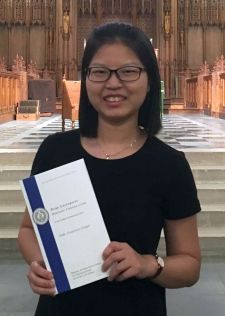Over ten weeks, Mathematics/Economics majors Khuong (Lucas) Do and Jason Law joined forces with Analytical Political Economy Masters student Feixiao Chen to analyze the spati-temporal distribution of birth addresses in North Carolina. The goal of the project was to understand how/whether the distributions of different demographic categories (white/black, married/unmarried, etc.) differed, and how these differences connected to a variety of socioeconomic indicators
Project Results: Working with over 2 million births from the North Carolina Birth Records Database, as well as block-group level socioeconomic indicators from the Census and American Community Survey, the team used spatial-statistics techniques to find ‘hotspots’ corresponding to clusters of births in specific categories. They then showed significant connections between socioeconomic indicators and cluster membership. Finally, they employed cutting-edge machine-learning techniques to quantify the distributional differences between births in different demographic categories.
Partially funded by the Sanford School of Public Policy
Click here for the Executive Summary
Faculty Leads: Christina Gibson-Davis, Paul Bendich
Project Manager: Lizzy Huang






